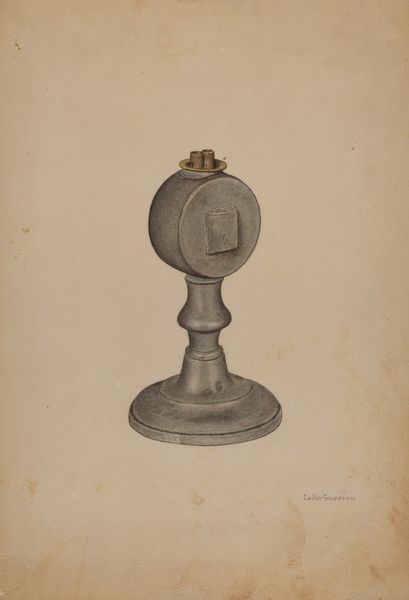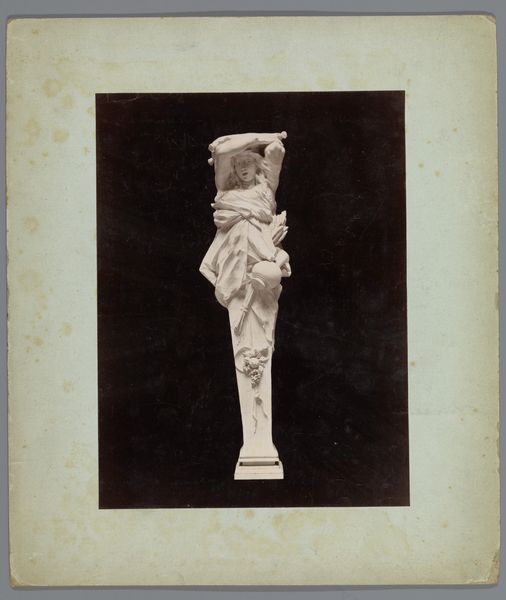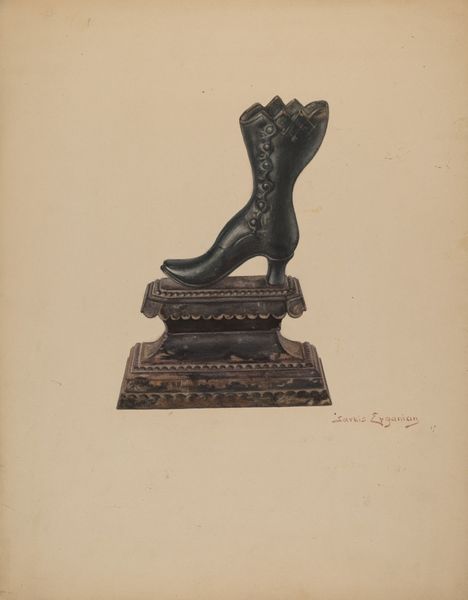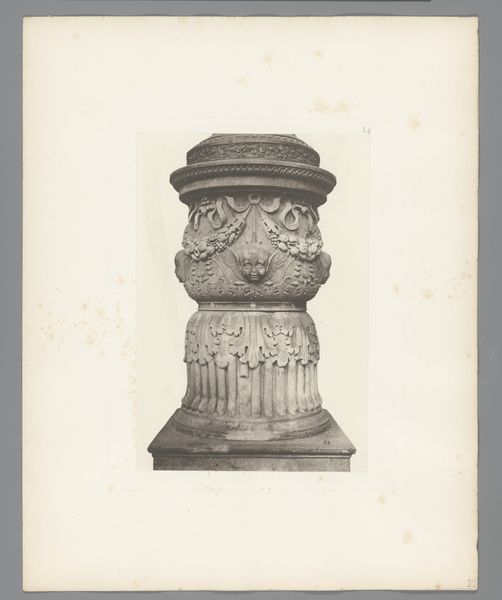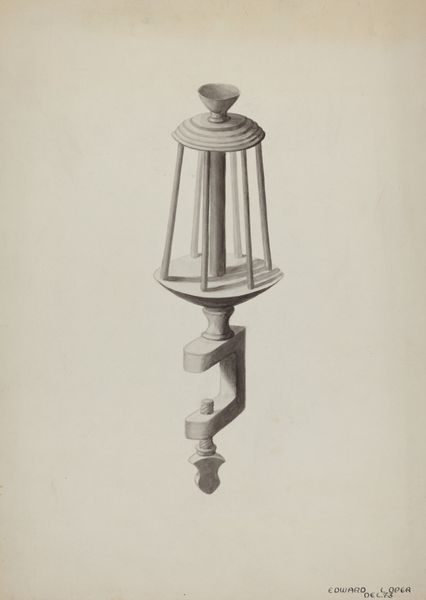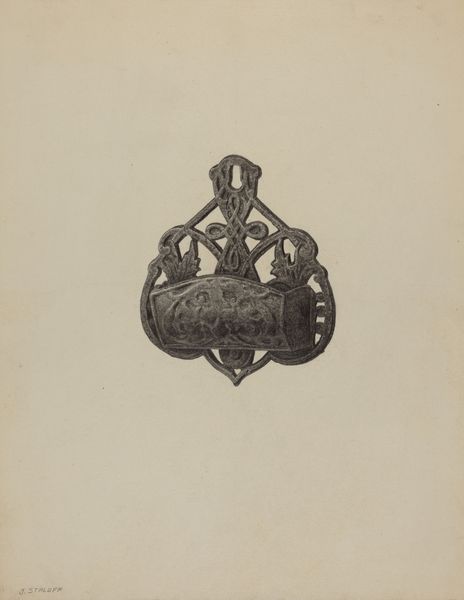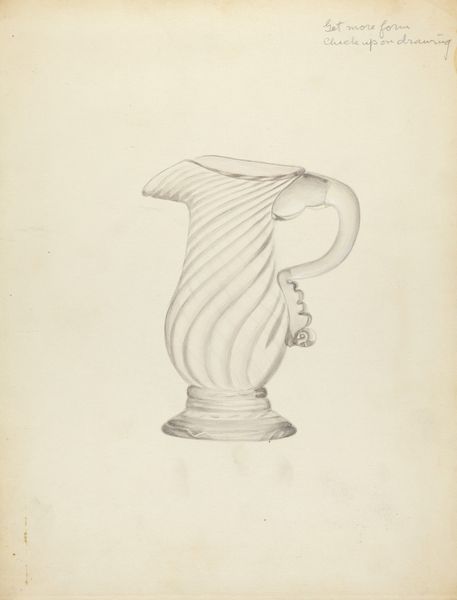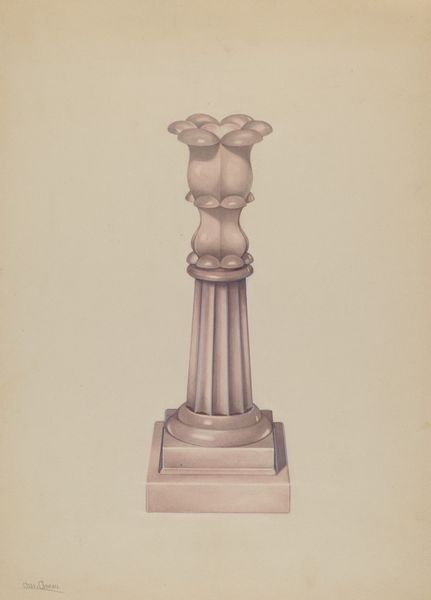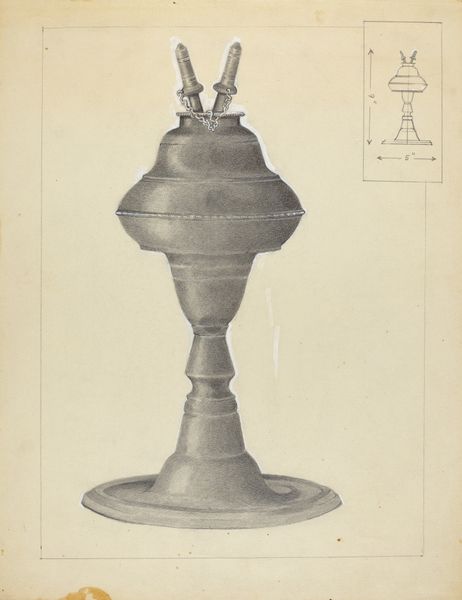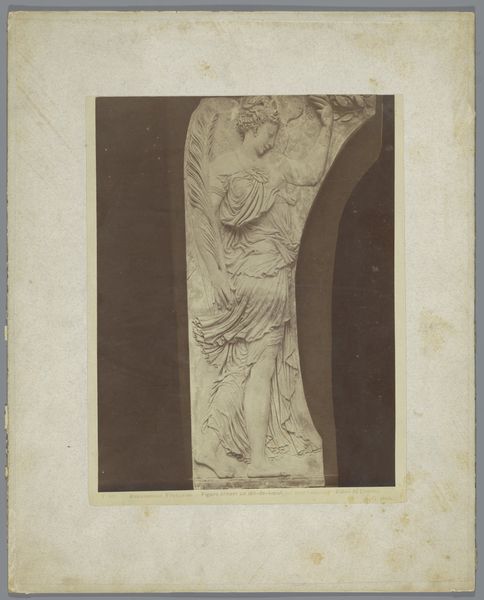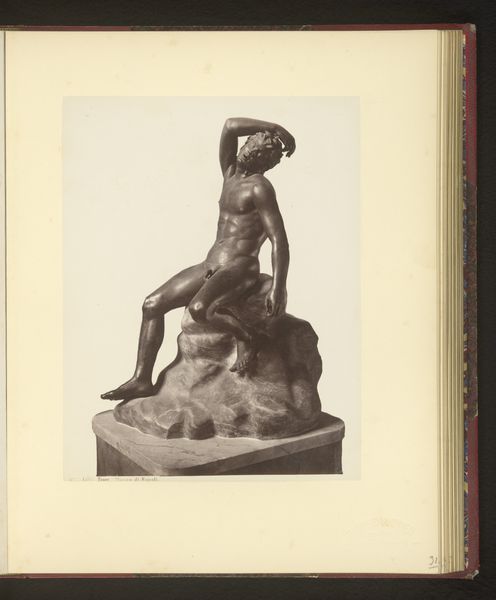
drawing, metal, sculpture, charcoal
#
drawing
#
metal
#
charcoal drawing
#
figuration
#
sculpture
#
charcoal
#
charcoal
Dimensions: overall: 50.8 x 37.8 cm (20 x 14 7/8 in.)
Copyright: National Gallery of Art: CC0 1.0
Curator: This artwork by Albert Rudin, circa 1941, titled "Hitching Post," depicts just that – a post, specifically, the top portion featuring a sculpted horse head, rendered in charcoal and possibly depicting cast metal. What strikes you initially? Editor: There's a kind of melancholic weight to it, despite its everyday subject matter. The monochrome charcoal lends a somber mood. It almost feels like a monument. Curator: I find that interesting, considering the material realities. These hitching posts were common, utilitarian objects. Think of the labor involved: from the iron foundry, the mold making, casting, and the transport to small towns and large cities alike, especially to cater to the needs and demands related to animal drawn methods of transport. How the function informed form here! Editor: Exactly, and how that accessibility shifted. The horse head, now isolated on a page, evokes a bygone era, a particular power dynamic centered on land ownership and agricultural labor and its effects across marginalized groups. Curator: The shift in transportation really reframes it. Consider the industrial advancements displacing the horse and buggy era, then reflected even in the metalworking industries and casting skills involved. Editor: And who were the craftspeople making these objects? What was their place in the socio-economic structure? Did they feel pride, alienation, or something in between producing this head for others? The "Hitching Post" itself acts as a symbol, standing in for lost traditions and for inequalities that often linger through generations, even in places that appear banal. Curator: I think understanding that original intended functionality informs so much, especially appreciating the shift in its symbolic weight and status now, presented as fine art, preserved and framed. Editor: Ultimately, viewing the Rudin piece provokes considering where these objects resided, the human element absent, and the cultural shift of this once ubiquitous item. What narratives could this stoic, dark head tell?
Comments
No comments
Be the first to comment and join the conversation on the ultimate creative platform.
